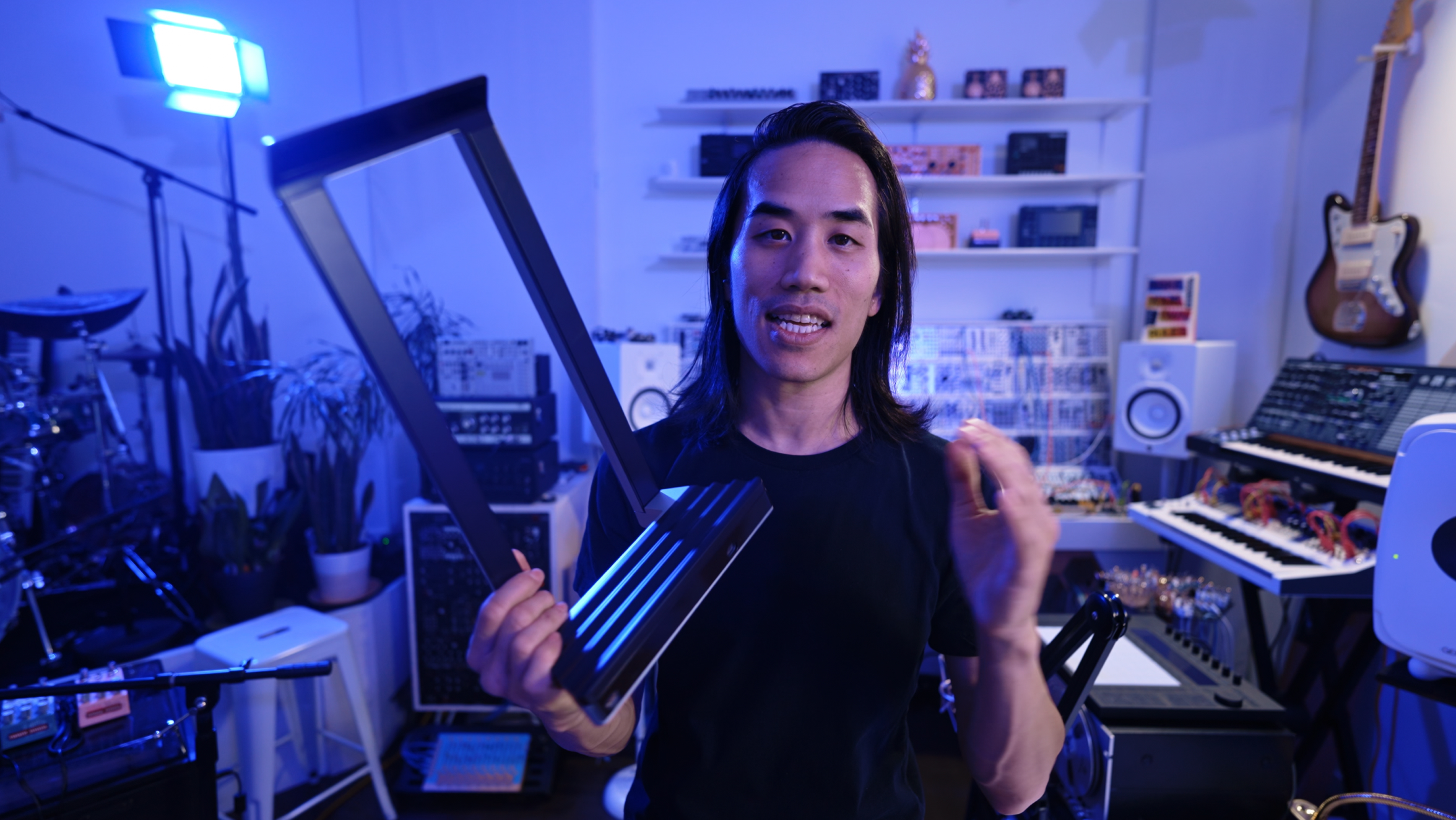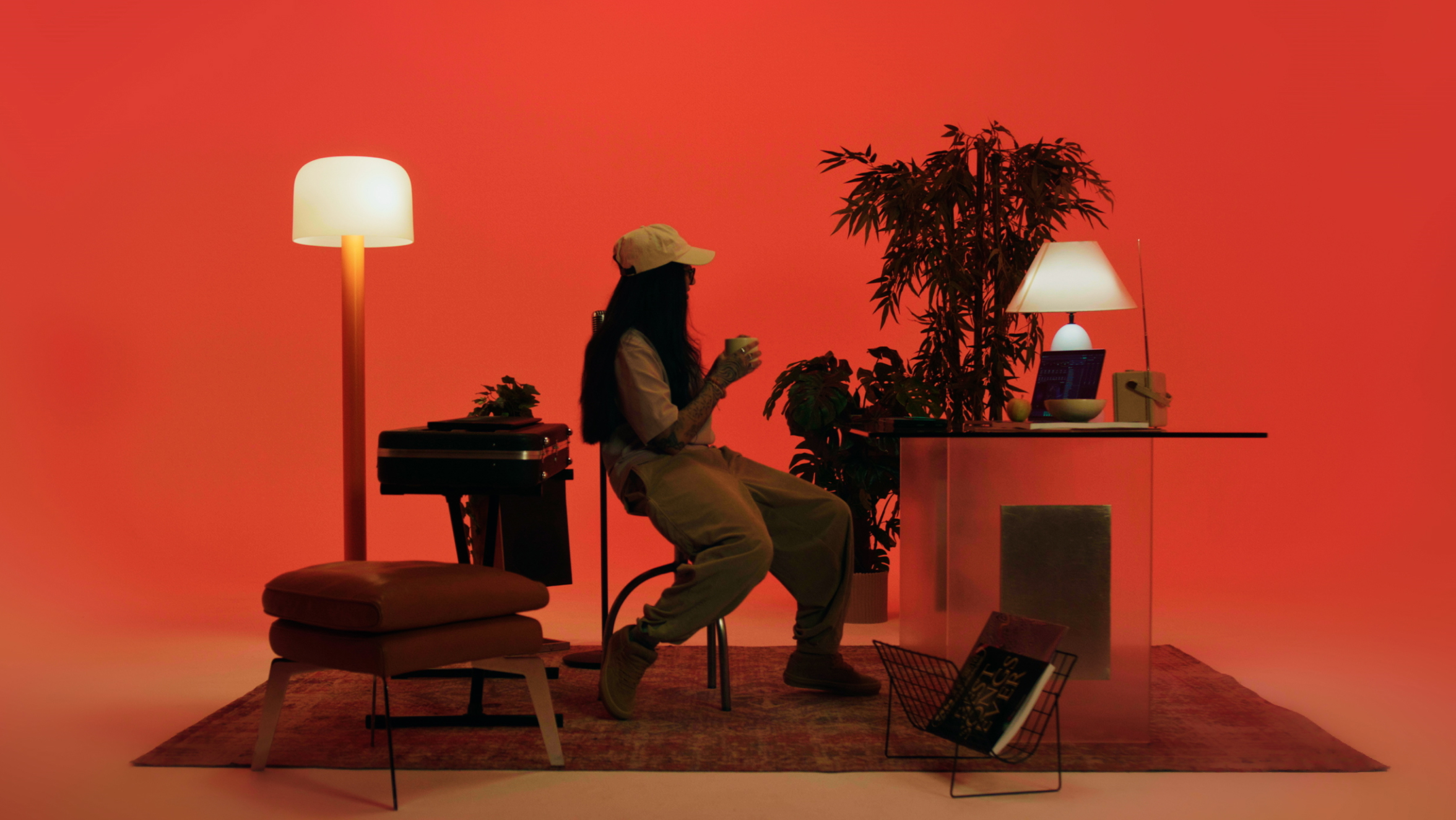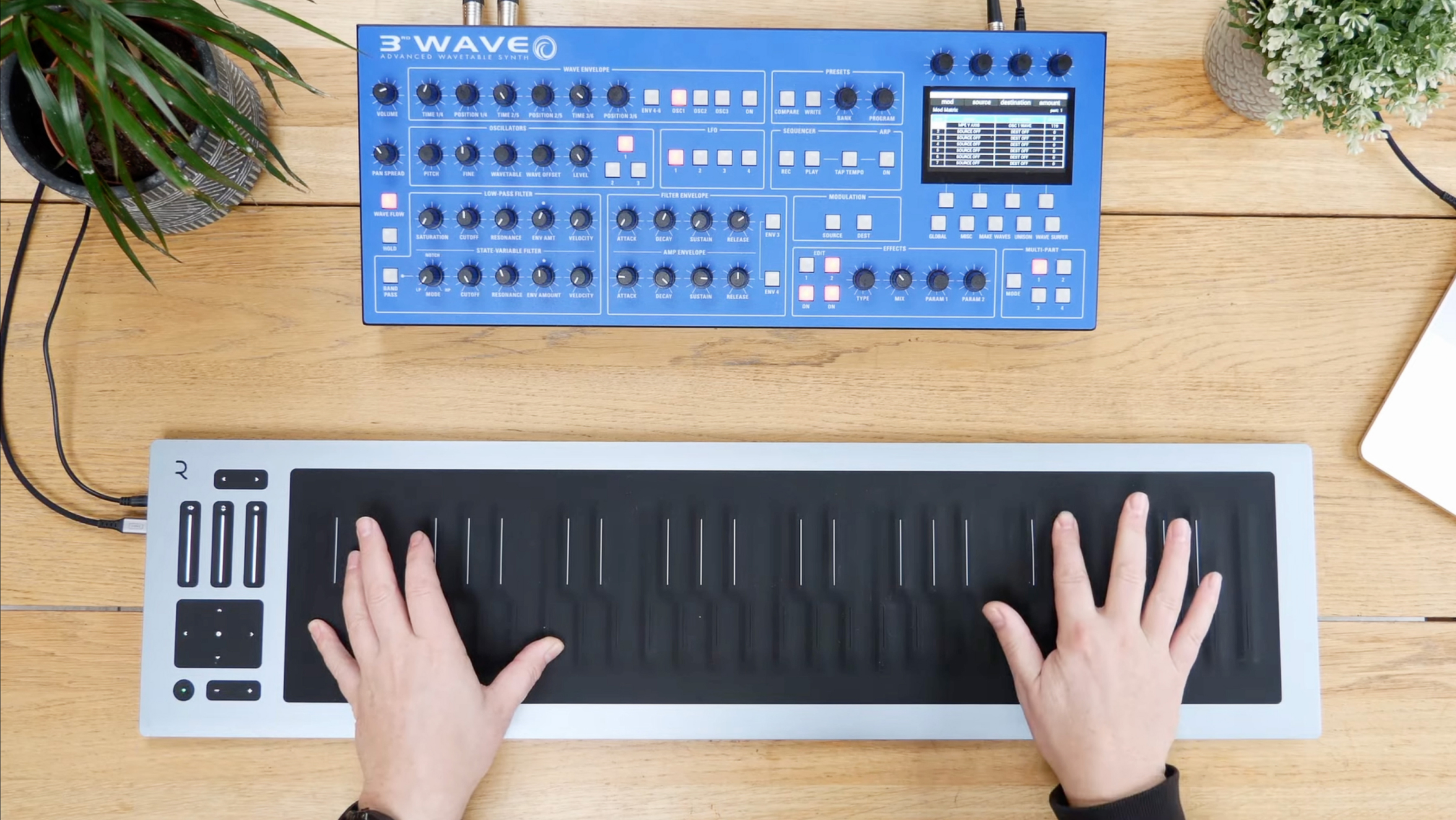The real differences between ROLI’s three hardware controllers
How to decide between LUMI Keys SE, Seaboard BLOCK M, and Seaboard RISE 2
A ROLI instrument comparison guide.
We’ve recently covered how to navigate the growing landscape of MPE instruments. This first dive focused on a wide range of options created by some of the most innovative MIDI instrument makers out there, though the list is never exhaustive. This help article is regularly updated with all of the hardware and software we know of which is compatible with MPE, and the medium is still very much shaping itself.
We have immense respect for those who are developing new ways for musicians to create. Not only is choosing an instrument as a musician deeply personal, there’s also a desire to find the sonic partner to define your sound. Even more, how idyllic does it sound to define a decade, or a moment in history for your genre? Many of us dream of the idea of using the original Roland TR-808, for example, before now when an annual holiday is dedicated to it.
MPE instrumentation will undoubtedly bring us the next genre-defining instrument. Likely more than one, given the brilliance of Ableton Push is generally embraced by a different player than a Haken instrument. There’s no need for exclusivity here either, and what we do feel strongly about is: Whatever your needs for an MPE instrument are, at least one from us at ROLI is right for you.
If you’re not quite sure about why you need any MIDI instrument or what MPE is, we’ve included some extra information at the bottom of this article.
We have three hardware instruments to choose from. The first two, Seaboard RISE 2 and Seaboard BLOCK M, boast an ultra-responsive and unconventional playing surface, whereas the third instrument, LUMI Keys Studio Edition, is made with a traditional key surface but is still thoroughly disruptive to what you might expect from a MIDI keyboard.
Let’s quickly level set with the technical specs of each one:
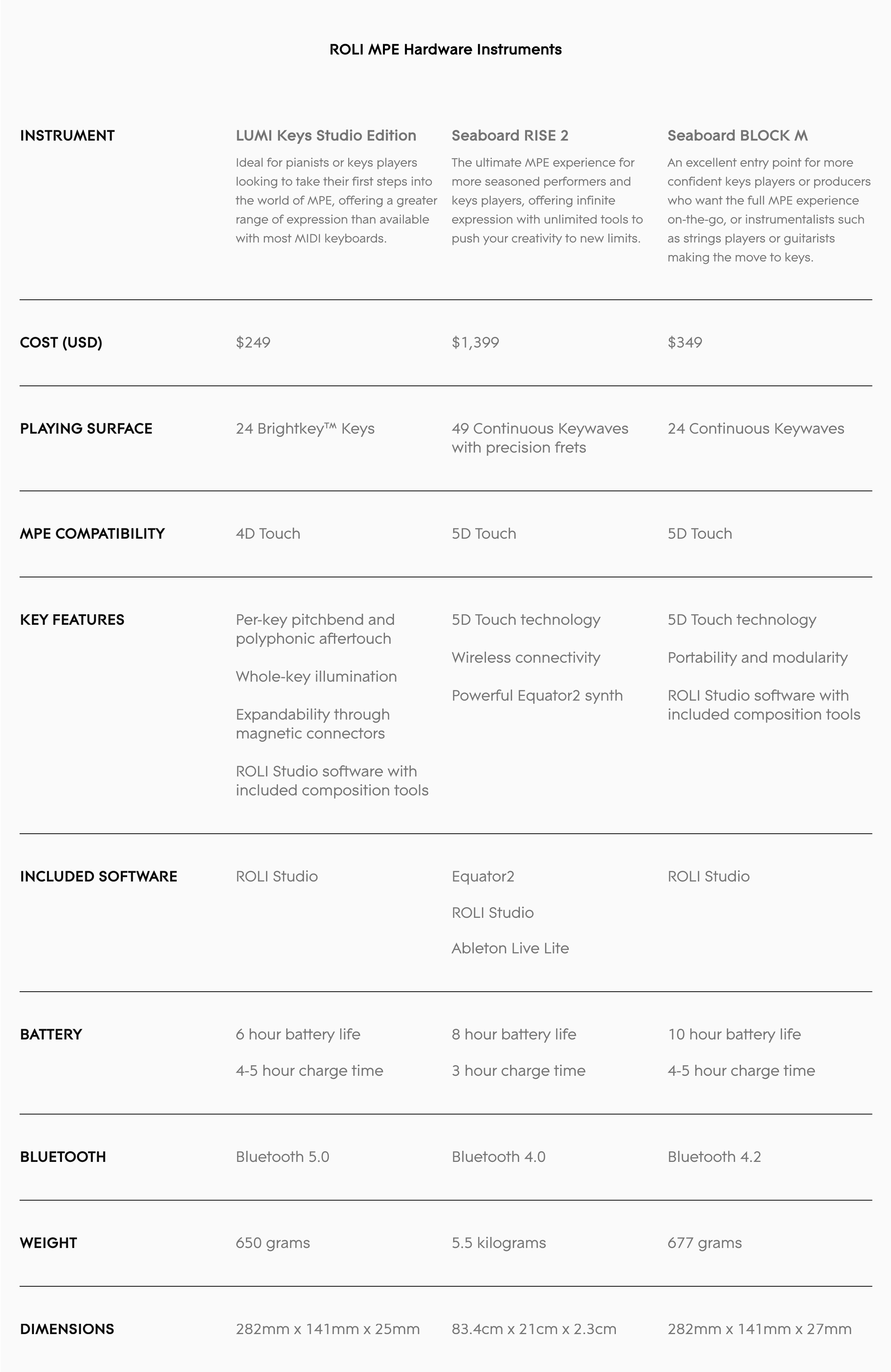
ROLI hosts a rich community of music-makers through these instruments – and what is so important to us is the how and why creatives engage with these tools.
From this point on, this article will avoid overly-listing every single feature, as this is readily accessible information in each link above. We will rather speak to why you might use one over the other, for what reason you might want to use more than one of them for different needs, and overall help you shape your sound to achieve your goals.
Choosing between LUMI, Block, or both
Any of these three ROLI instruments can serve as your go-to MIDI surface, or your one-of-a-kind MPE playground. Let’s first focus on LUMI Keys and BLOCK M, both of which feature innovative multi-dimensional Touch technology and edge-to-edge playing surface design.
While these instruments also share nearly the same dimensions and weight, the playing experiences and sonic possibilities are significantly different.
Firstly, you have the playing surface which empowers different playing styles. One reviewer wasted no time showcasing this in the title of their BLOCK M video: I needed to touch it. It’s true that the silicon playing surface is unlike any other, and this instrument is new and improved from its 2017 version.
The surface benefits from 5D Touch, learn more about how your use of bespoke gestures can shape your sound like never before. While LUMI Keys also boast enhanced touch dimensions, the sliding gesture is exclusive to Seaboards. This is due to the continuous surface, allowing for accurate localization of your movements not possible with separated keys. Players who are passionate about responsiveness to subtle movements, such as instrumentalists coming from wind, brass, or fretless acoustic instruments, might find this of extra importance.
When sliding, the playing experience and response of the instrument will also be different based on both where on the board you are sliding. When sliding over the wavy surface in the center, where we might expect the normal keys to lie, you’ll generate a more staccato output signal. Since each wave represents a chromatic half step, sliding across them will resemble sliding up the neck of a fretted instrument, at least in the factory settings of ROLI software.
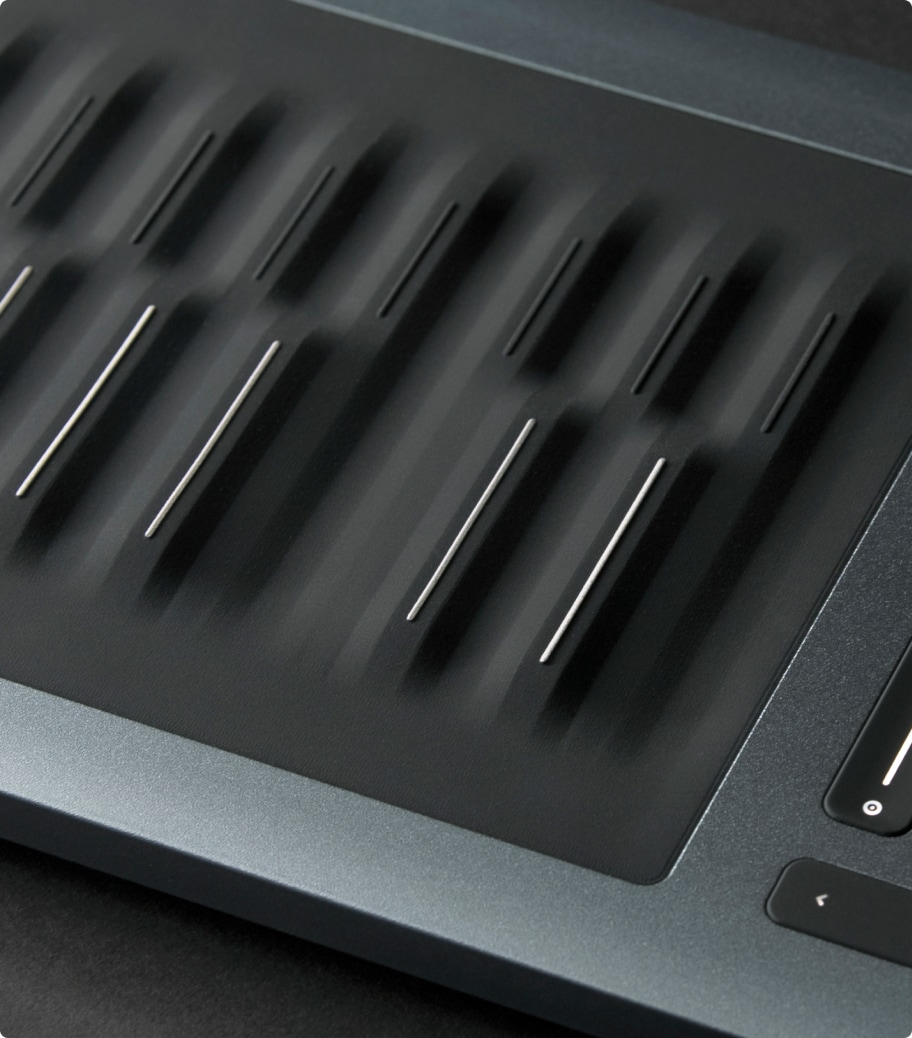
If you instead slide across the smoothed surfaces above and below the keywaves, you will experience a much more legato sliding effect. A number of presets really take advantage of this, allowing for easy triggering of risers and swirling soundscape layers with unforgettable textures. This all before manipulating further parameters within ROLI Studio Player. If you do this over the wavy surface in the center, with each wave representing a chromatic note, or across the smooth top or bottom of the surface. When playing in the second way, the surface will still recognize the semitone but allow for more or a legato sliding effect.
Then there is the possibility of further manipulation of the sounds via ROLI Studio Player. This is a powerful suite included with every instrument featured here, but the idea applies to any other MPE-compatible software you might use.
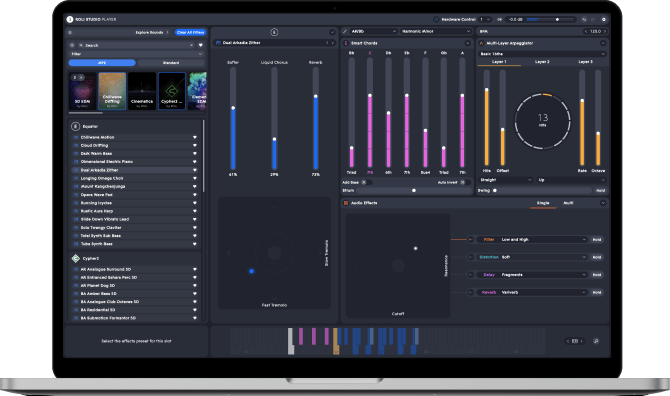
The keywave experience differs greatly from the LUMI Keys Studio Edition, or SE. The name honors the key surface, whose keys illuminate in distinct colors by semitone with adjustable brightness. These are not only aesthetically brilliant for live performance or video content, but perhaps more importantly technically useful to players of all levels.
If you’re a complete beginner, you can actually use LUMI Keys SE to learn piano interactively with the LUMI Music App. This prompted one reviewer to refer to the instrument as the Peloton for piano.
Though if you have some chops already, you can also use the illumination as a queue for music theory. Studio player makes this easy via the global scales and modes settings; if you are for example playing a song in G Mixolydian, you can set this in the software and your instrument will illuminate which keys are technically in that scale. This can help you both play in key, or decide when to move out of it for your particular song or jam.
These are some of the ways that LUMI Keys SE differs from the Seaboard BLOCK M. Given the differences in functionality and sounds, picking up one of each is anything but repetitive, and can truly be a game changer for your music at home and on the go.
Why a RISE 2?
The experience of playing a RISE 2 is nearly the same as a BLOCK M, with a few main differences: Wider octave range, semitone legato, precision frets, and on-board controls.
The first point is obvious: either a 24 or 49 "key" range across the continuous keywave surfaces. While yes, you could opt to "snap" together multiple LUMI Keys or Blocks to increase the octave range, there are a number of important features that only come with RISE 2. This includes the metal chassis for improved durability and a sleek look while playing.
Though you might be curious of what on earth a precision fret is, as it was not mentioned above with the BLOCK M. The frets are a major difference in the RISE 2 from the original release. In particular with such a wide range for complex two-handed pieces, the overall purpose is to provide more precise playing. The small ridges where each key would be are subtle, but easily located even in dark settings. This is one crucial feature which allows the RISE 2 to be not only a studio staple, but an on-stage, live performance one as well.
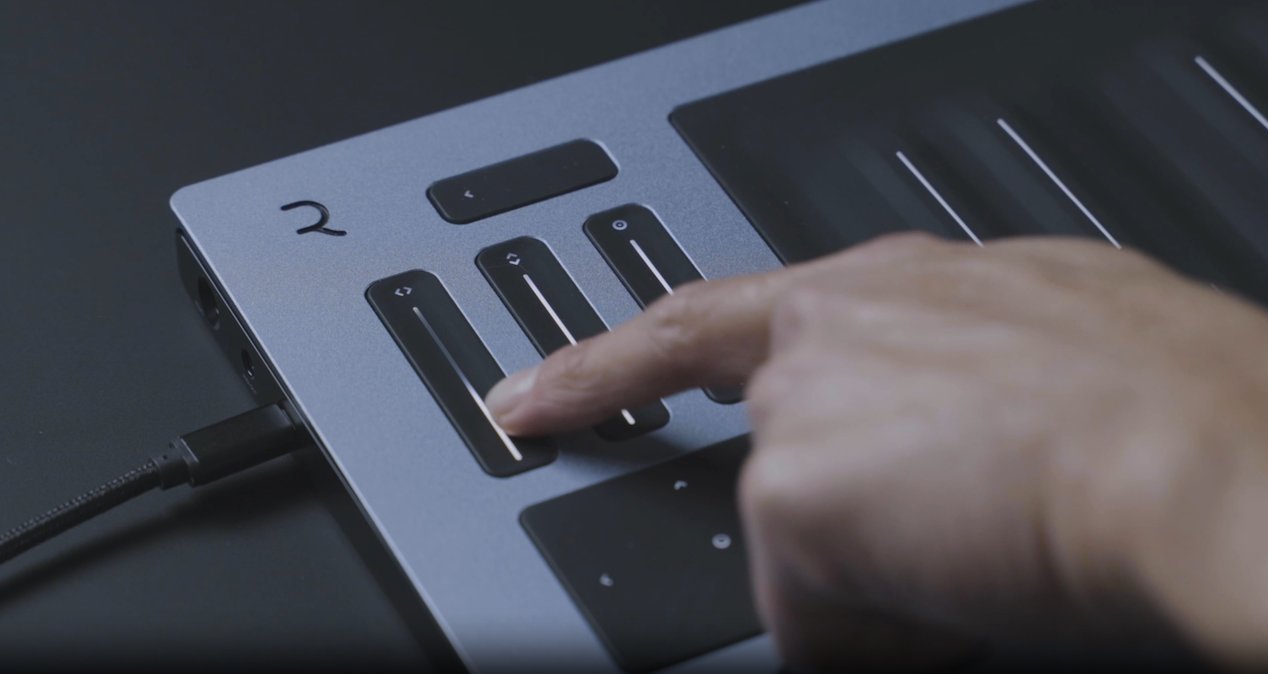
There are also the on-board controls. These three touch faders, as well as the XY pad, are as a standard associated with touch dimensions and basic effecting, but can be MIDI mapped to whatever your needs are. In the case of needing another MIDI mapped parameter, a sustain pedal can fill the gap. There are also two clickable controls to help you more swiftly switch presets or change the octave range of your RISE 2. So if you are a fan of a combination of controls between your instrument and the software for using, this is a major plus along with the full feature details and included software.
We touched on the way in which the keywave surface can lend itself to more staccato or legato playing when overviewing the BLOCK M. One key difference with the RISE 2 is the ability, via the onboard controls, to set for semitone legato. This meaning, you can trigger a sliding effect between notes without sliding your fingers, which lends itself quite well to a range of sounds. This is no doubt why RISE 2 is a go-to instrument for many makers of cinematic music, as it legitimately places a chamber of ready-to-go orchestral musicians in your studio.
Portability without lost power
All of these instruments include battery-power and bluetooth compatibility. While the smaller of the three instruments are more feasible to benefit from this on a plane, it’s noteworthy for on-stage use for all three of them.
After all, what good is a travel-ready instrument if you require power or WIFI to use it? MPE instrumentation continues to evolve since the early developments in 2013, and each of these instruments provide you with a distinct, energizing pathway for creation wherever you are in the world.
Extra knowledge for beginners
Why you need a MIDI instrument
MIDI, or Musical Instrument Digital Interface, was first introduced in the 1980s with the format being updated only once since. The language ensures that your music production software and hardware, regardless of manufacturer, can communicate with one another.
A MIDI instrument firstly enables your ability to create with virtual instrumentation. Any such instrument, referred to as plugins, will be controllable via your MIDI hardware. Most often these instruments consist of pads, piano keys, or both as the standard place to trigger a sound, but they’ll also boast standalone value. Depending on the size and complexity of the instrument, you may also have a number of faders, knobs and switches for modulation along with a range of presets. One of the most common, entry-level MIDI instruments is the MPK Mini Play, which AKAI equips with over 100 factory sounds.
Why MIDI Polyphonic Expression
In addition to operating as standard MIDI controllers, all of ROLI’s instruments hold the superpower known as MIDI Polyphonic Expression. Also referred to as MPE, this innovation from the basic MIDI interface enables more subtle playing gestures to be recognized and responded to.
In other words, playing a key or pad does not sound the same. Rather, it will respond to the pressure and movement you choose to apply to the playing surface. This in many ways bridges the gap between MIDI, a purely electronic language, and the sonic depth of acoustic instrumentation.
Discover LUMI Keys Studio Edition, Seaboard BLOCK M, and Seaboard RISE 2.
Suggested articles
Join the ROLI community
